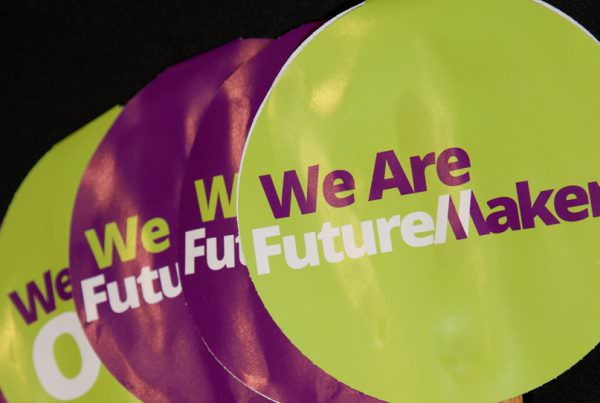
The 8th annual Southwest Florida regional educational and workforce outcomes study has been released and provides key information about demographics, education, occupations, employments gaps and projected job growth. For the first time, the FutureMakers Coalition and Workforce Now have combined their annual outcomes reports as an example of collective leadership and partnership.
The studies are conducted annually by Workforce Now, a research initiative that studies the regional workforce and is comprised of researchers from Florida Gulf Coast University, Hodges University, Florida SouthWestern State College and the FutureMakers Coalition. The FutureMakers Coalition is a cross-sector coalition from Hendry, Glades, Collier, Lee and Charlotte counties with the shared goal of closing the higher education gap and, more importantly, retaining those high-skilled Southwest Floridians in jobs within the region.
The available outcomes data indicate that Southwest Florida is making positive progress towards achieving a goal of increasing the proportion of skilled working age adults with college degrees, workforce certificates, industry certifications and other high-quality credentials to 55 percent with an increase from 39 percent in 2013 to 41.2 percent skilled workers among working age adults in 2018.
The study is divided into three major sections including demographics, educational outcomes and workforce overview. Each of the three Educational Outcomes – Aspiration and Preparation, Access and Entry, and Persistence and Completion – begin with a “report card” of their respective indicators, along with an overview of the changes from last year’s report. The report also indicates the top growth occupations by major occupational group, level of education, and their median hourly wages.
Demographics show that Southwest Florida population is growing and at a faster rate than the State of Florida with primary growth occurring in the coastal counties of Southwest Florida. In 2018 there were 605,015 working age (25-64) adults (an increase of 6.8 percent since 2014) and 249,486 in the skilled workforce (an increase of 6.9 percent since 2014). Meeting the 55 percent goal would have required 332,758 working age adults in the skilled workforce, or approximately 83,000 more skilled working age adults in 2018 (requiring a 42.5 percent increase in the skilled workforce between 2014 and 2018). The rate of growth in the Southwest Florida skilled workforce must significantly outpace the rate of growth in the region’s working age population, suggesting that the FutureMakers Coalition and its network partners must not only maintain, but expand, their efforts to identify opportunities and to foster outcomes to achieve the goal of 55 percent in skilled working age adults in support of a diversified and resilient economy.
Educational Outcomes indicate general positive progress in Aspiration and Preparation, Access and Entry, Persistence and Completion measures. Third Grade Reading, High School Graduation Rates, Post-Secondary Fall Enrollment, and Technical Education Fall Enrollment have trended upward in Southwest Florida. Kindergarten Readiness, FAFSA Completion Rate, Retention, and On-Time Completion have trended downward. Selected outcomes are presented by race and ethnicity and by gender. In general, the races and ethnicities represented by Southwest Florida’s minority residents achieved worse educational outcomes, possibly suggesting that the discrepancies in attaining better outcomes may be the result of long-standing systemic barriers that still exist for the populations with lower attainment.
The workforce report indicates that of the 407,258 average monthly workers, the Retail Trade, Accommodation and Food Services, Health Care and Social Assistance, and Construction Industries comprise the majority (approximately 60 percent) of total employment in Southwest Florida. Those four industries also have the highest projected average annual growth comprising approximately 50 percent of additional jobs. The average annual wage for all industries is approximately $44,000.
- Southwest Florida’s population increased to 1,346,865 in 2019, up 2.7 percent from the previous year, and up 16.9 percent from 2010. The region’s population growth has exceeded the state growth since 2010. Ninety-six percent of the region’s population lives in coastal Lee, Collier, and Charlotte Counties.
- Southwest Florida’s working age residents percentage is below the state and has declined each year since 2014.
- The skilled workforce in Southwest Florida has grown each year since 2014 with Lee County having the largest skilled workforce in the region. All five Southwest Florida counties had a lower percentage of skilled workforce than the state of Florida.
- Among the three Aspiration and Preparation indicators, Third Grade Reading Proficiency and High School Graduation Rates in the Southwest Florida region improved from last year’s report.
- Kindergarten Readiness declined slightly from last year’s report while the state of Florida observed a slight increase in Kindergarten readiness in 2019.
- Among the three Access and Entry indicators, Post-Secondary Fall Enrollment and Technical College Fall Enrollment in the Southwest Florida region improved from last year’s report. Fall enrollment in the region has steadily increased since 2014, with only one decline in 2017 (Southwest Florida was significantly impacted by Hurricane Irma in 2017, which may have played a role in the decreased enrollment numbers). While fall enrollment increased in Southwest Florida, both the state and the nation each had a fall in post-secondary fall enrollment in 2018.
- During the 2018-2019 academic year, the region’s FAFSA completion rate declined from the previous year. FASFA completion rates in the state of Florida also decreased between these two academic years.
- Among the six Persistence and Completion indicators, Business partnerships, Returning Adults, Living Wage, and Local Jobs Post-Secondary in the Southwest Florida region increased from last year’s report.
- Southwest Florida has a higher percentage of employees in retail trade, accommodation and food services, construction, arts, entertainment, and recreation, real estate and rental and leasing, agriculture, forestry, fishing and hunting, and mining, quarrying, and oil and gas extraction, when compared to the State of Florida.
- Southwest Florida’s economic growth continued to strengthen from 2014 to 2018. During the time period, the region has experienced an increase of 54,948 employees.
- While the construction industry continues to recover from the recession, both the accommodation and food services and retail trade have grown immensely since 2011.
- Health care and social assistance is projected to be the fastest-growing industry in Southwest Florida, adding an average of 1,558 employees each year from 2018 to 2026. Construction is projected to add the second largest number of employees, adding 927 per year.
- The top 10 employment gaps were for retail salespersons, first-line supervisors of retail sales, stock clerks and order fillers, customer service representatives, first-line supervisors of food preparation and service, maintenance and repair workers, first-line supervisors of office and administrative support workers, cashiers, sales representatives (all other services), and food preparation and serving workers.
- The top 10 employment growth occupations are retail salespersons, landscaping and groundskeeping workers, registered nurses, food preparation and serving workers, waiters and waitresses, construction laborers, nursing assistants, carpenters, customer service representatives, and janitors and cleaners.
- The expected top 10 long-run growth occupations requiring a minimum of post-secondary adult vocational training are nursing assistants, carpenters, customer service representatives, restaurant cooks, medical assistants, first-line supervisors of retail sales, personal care aides, home health aides, maintenance and repair workers, and licensed practical and vocational nurses.
- The forecast top 10 occupations for growth from 2018 to 2026 requiring at least an associate’s degree are registered nurses, first-line supervisors of construction workers, general and operations managers, business operation specialists, first-line supervisors of office and administrative support workers, construction managers, property and real estate managers, bookkeeping, accounting, and auditing clerks, software developers, and postsecondary teachers (all other).
- The forecast top 10 occupations for growth from 2018 to 2026 requiring a bachelor’s degree include elementary school teachers, management analysts, accountants and auditors, secondary school teachers, middle school teachers, financial managers, market research analysts, human resource specialists, teachers and instructors (all other), and physician assistants.
“A driving force behind the FutureMaker Coalition’s efforts is to ensure that everyone – no matter where you come from, what you look like, or how much money your family has – has access to genuine educational and career development opportunities along the cradle-to-career pathway and to flourish in Southwest Florida’s growing economy,” said Tessa LeSage, director, FutureMakers Coalition. “The outcomes presented in this report, however, paint a different picture; opportunities are not equally realized among the region’s minority populations.”
The FutureMakers Coalition aims to transform Southwest Florida’s workforce by increasing the proportion of working age adults with college degrees, workforce certificates, industry certifications and other high-quality credentials to 55 percent. The coalition has grown to over 300 FutureMakers representing business, education, government, nonprofits, philanthropy, residents, and students across Glades, Hendry, Collier, Lee, and Charlotte counties. Southwest Florida has been designated a Talent Hub by the Lumina Foundation in partnership with The Kresge Foundation and received a $125,000 award to support local efforts to increase educational attainment.
The FutureMakers Coalition encourages businesses to join and contribute to sustaining this community-changing initiative by visiting https://www.futuremakerscoalition.com or emailing Tessa LeSage at TLeSage@floridacommunity.com.
The full study can be downloaded from the FutureMakers Coalition site at https://www.futuremakerscoalition.com/reports/




























